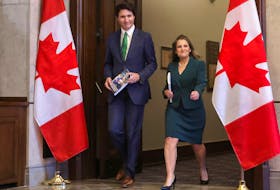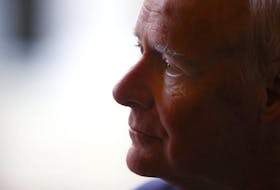If you want to know why Ontario Premier Doug Ford did not impose a more drastic shutdown of the province’s economy on Friday, consider how the nature of the COVID-19 caseload has shifted.
During the worst of the first wave in late April, Ontario was coping with nearly 5,700 active infections. An economic lockdown knocked that down to 920 in August, but, in the past six weeks, the virus has staged a remarkable comeback, producing 5,200 active cases as of Friday.
But many fewer of these cases require hospitalization. COVID-19 patients across the province occupied about 1,000 beds throughout late April and much of May, and dropped to 32 in mid-August. On Friday, the tally stood at 167 — just one-sixth of where it stood during the spring peak.
(In Ottawa, hospitalizations dropped by 50 per cent from 48 in April to 24 this week.)
There’s no mystery about what’s happening here. Relatively more of those testing positive for coronavirus are young, with accordingly stronger immune systems. Since Ontario entered Stage 3 of its economic reopening July 17, the 20-29 age group has recorded the fastest increase in positive COVID-19 tests per 100,000 population.
Of course this reality merely gives the premier a little more breathing room in his drive to return the province to normal. Left unchecked, the SARS-CoV-2 virus, which causes COVID-19, could spiral out of control because it is an extremely efficient spreader. In time, without mitigation, young carriers will infect older people.
On Friday, you could see Ford wrestling with a basic conundrum: he wants to keep people healthy and at work. In a pandemic, these are in conflict.
From the beginning, this virus’s ability to multiply has left Ontario and other provinces consistently one or two steps behind in their responses. The country has spent a fortune on an economic shutdown and partial reopening. And now it feels like we’re slipping into reverse. But we’re likely not headed back to where we were.
Ford and other premiers, including Quebec’s François Legault, relied on moral suasion to convince people to keep their distance and wear face masks — the only reliable tools for fighting a virus with no known cure or vaccine. It hasn’t worked as well as hoped because it takes just a few super-spreaders to undo the work and self-restraint of a community.
One way of dealing with super-spreaders is to test and isolate them.
But, as Ford acknowledges, the province’s testing regime is under severe stress, despite remarkable strides. In the roughly five months since the worst of the pandemic, Ottawa has octupled its capacity to roughly 2,000 tests per day (Ontario has quadrupled its output to about 40,000 daily tests).
But shifts in public policy can nevertheless overwhelm the system — and quickly. Such was the case when Ford suggested that anyone who wanted a COVID-19 test could get one. In Ottawa (population one million) and Ontario (14.7 million people), that was an important factor in producing multi-hour lineups and a backlog of some 90,000 tests.
Not surprisingly, Ford on Friday retreated. For the moment, only those with appointments will be tested.
It was a reminder of just how many variables must be considered in trying to mitigate against this virus. A key one is the starting point of any resurgence. Ontario accounts for about one-third of the country’s active COVID-19 cases though it has 38 per cent of the population. Quebec, on the other hand, has 42 per cent of Canada’s active cases despite making up just 22.5 per cent of the country’s population.
Quebec, from the beginning, has had more difficulty getting a handle on the numbers because it had the remarkable bad fortune to begin its spring break on Feb. 29 — before other provinces and just as the SARS-CoV-2 virus was circulating in North America with greater speed.
While Ontario and Quebec both managed to flatten the curve of infections, the virus continued to circulate at a sufficiently high level to make reopening economies risky business. Relaxing rules is guesswork — albeit informed by science. Ford’s cabinet, for instance, must wait two to three weeks to see how the virus responds to new restrictions. Maybe this will be enough to trim the number of active cases and hospitalizations, maybe not.
The stark fear of last March is gone, but it has been replaced by a more nuanced concern about where we’re headed — and the sense we’ll all find out at nearly the same time as Ford himself.
Copyright Postmedia Network Inc., 2020








